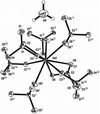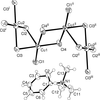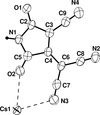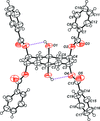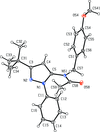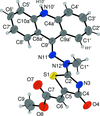issue contents
February 2010 issue

Cover illustration: A view of the hydrogen-bonded dimer and hydrogen bonding (thin lines) involving the solvent water molecule in the structure of (3E)-3-(2-furylmethylidene)-1H-indol-2(3H)-one monohydrate. See Spencer, Chowdhry, Hamid, Mendham, Male, Coles & Hursthouse [Acta Cryst. (2010), C66, o71-o78].
inorganic compounds
Download citation


Download citation


An H3O+-templated layered neodymium sulfate has been hydrothermally synthesized and characterized by thermogravimetric and single-crystal structural analysis. In the structure, Nd3+ cations combine with sulfate groups to form anhydrous anionic [Nd(SO4)2]− layers with tricapped trigonal–prismatic neodymium. To achieve charge balance, H3O+ cations are inserted between the layers where they hydrogen bond to terminal oxide O atoms of the sulfate anions.
Download citation


Download citation


The crystal structures of two caesium vanadium hydrogenphosphates present three-dimensional frameworks of VO6 octahedra and PO4 tetrahedra with tunnels in which Cs+ cations are located.
Download citation


Download citation


The title compound crystallizes in a new structure type with the TaV atom surrounded by seven fluoride anions, forming a monocapped trigonal prism, and with the potassium ions coordinated by eight fluoride anions. One fluoride anion is enclosed in an octahedron of potassium cations. The potassium octahedra share faces to form infinite cationic chains of composition [FK3]2+. Isolated [TaF7]2− anions are distributed between the chains to complete the crystal packing.
metal-organic compounds
Download citation


Download citation


Download citation


Download citation


Download citation


Download citation


Download citation


Download citation


Download citation


Download citation


Download citation


Download citation


Download citation


Download citation


Download citation


Download citation


Download citation


Download citation


Download citation


Download citation


organic compounds
Download citation


Download citation


Download citation


Download citation


Download citation


Download citation


Download citation


Download citation


Download citation


Download citation


Download citation


Download citation


Download citation


Download citation


Download citation


Download citation




 journal menu
journal menu











